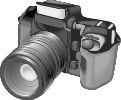At one point or another, most of us have found ourselves thumbing through old family photos and suddenly staring at a photo with contents that are unfamiliar to us. In our minds, we begin asking ourselves questions like “when and where was this photo taken?” or “who are the individuals in the photo?” Often the answer is lurking on the back side of the photograph, hand written in ink.
Those who are considering the purchase of a digital replacement for their old film camera often wonder how the same thing can be accomplished with digital photographs. Digital photos manifest themselves in an electronic form without actual physical form, so there is nothing that can be written on or labeled. CDs or DVDs containing photos can be physically labeled, but individual photos cannot.
It is possible, however, to digitally label each photograph with the use of metadata. Metadata is a generic term that simply means “data that describes other data.” In this case, it is information that describes your digital photograph. This metadata, in most modern digital cameras, is stored inside each photo using the EXIF standard.
Each time your camera takes a picture, certain pieces of information are embedded deep inside the image. This information, which actually describes the photo and how it was taken, is dubbed ‘EXIF data.’ EXIF data can indicate when a given photo was taken (date and time), what shutter speed and F-stop was used, zoom values, whether the flash fired or not, the model and brand of the camera, and so on. The specific information each camera chooses to record in the file may vary, however.
Most photo editing programs will allow you to view EXIF information. Some editors will also let you add additional information to the photo, like the name of the photographer, where the photo was taken, user comments, etc. Adobe Photoshop and Jasc Paint Shop Pro are two common graphic editors that can read and write EXIF data. IrfanView, a freeware image viewer, will also read EXIF information. Other programs that can read and/or write EXIF data can be found by searching the Internet.
Have comments or suggestions for a weekly Tech Tips article? Send an email to webmaster@sunad.com.
Understanding Digital Cameras, Part IV

